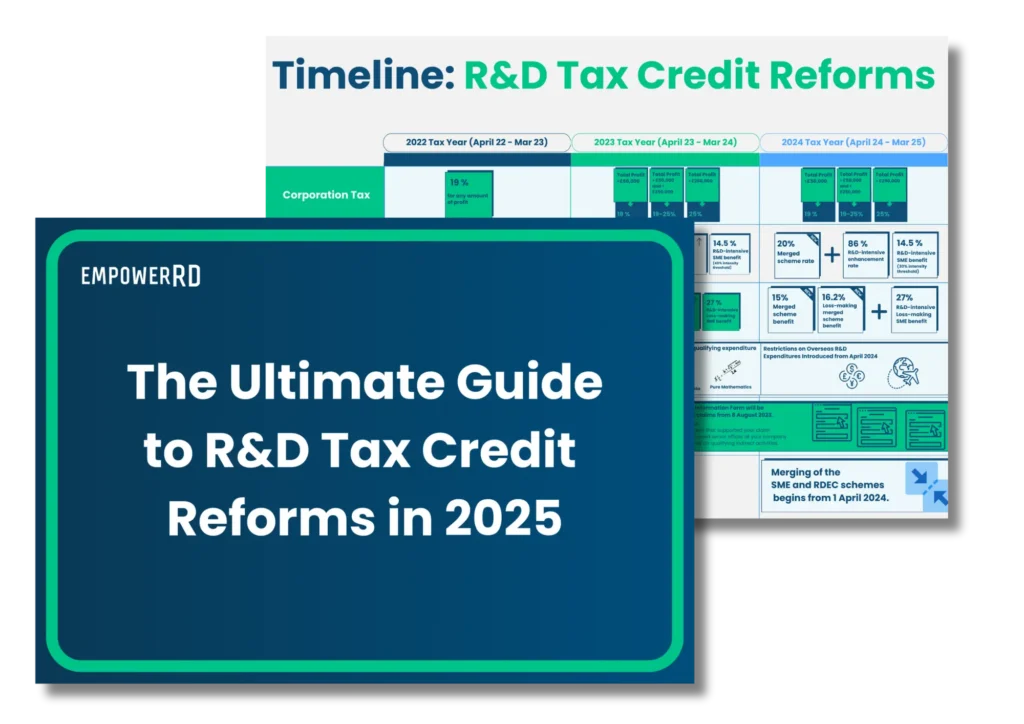From 1 August 2023, the process of filing an R&D claim is changing. HMRC require that all companies submit an Additional Information Form as supporting evidence for an R&D claim before the Company Tax Return.
Why has HMRC included the Additional Information Form?
HMRC now requires a new Additional Information Form, which has a fixed set of questions. The purpose of this change is to simplify the claiming process, speed up processing time, and ensure scheme compliance is met.
The new form provides clear instructions on the necessary information for a claim, which was previously ambiguous.
What have we done to align with the Additional Information Form?
Our platform has been updated to align with the Additional Information Form and HMRC guidance. Especially the narrative section, which has been revised to comply with the new form’s requirements.
Our new methodology isn’t a total overhaul from the previous one. It’s mostly similar to our previous ‘Challenge’ questions. However, the focus is on individual “Projects” and the scientific and technological uncertainties encountered in each project.

So, what are the steps in the new R&D project methodology?
Step1: What are your project details?
To help us and HMRC identify key high-level information about your project, we require the following:
- Project Name
- Main Field of Science and Technology
- Project Start Date (if the project started in this claim period)
- Project End Date

Step 2: Who is your project lead?
We need to know some details about their job and skills to identify your Technical Project Lead, aka Competent Professional in HMRC terminology.

Step 3: Your baseline knowledge and objective
What did you know at the start, and what were you hoping to accomplish? You need to explain what your Competent Professional knew was possible to help achieve your company objective. We always advise listing it out in bullet points using the guidance!

Step 4: What scientific or technological uncertainties did you face?
Detail why aspects of the work were not straightforward and how you attempted to overcome the difficulties faced. Remember, the work does not only need to be bespoke, but scientifically or technologically challenging too! Like in Step 3, list it all out in bullet points using the guidance.













